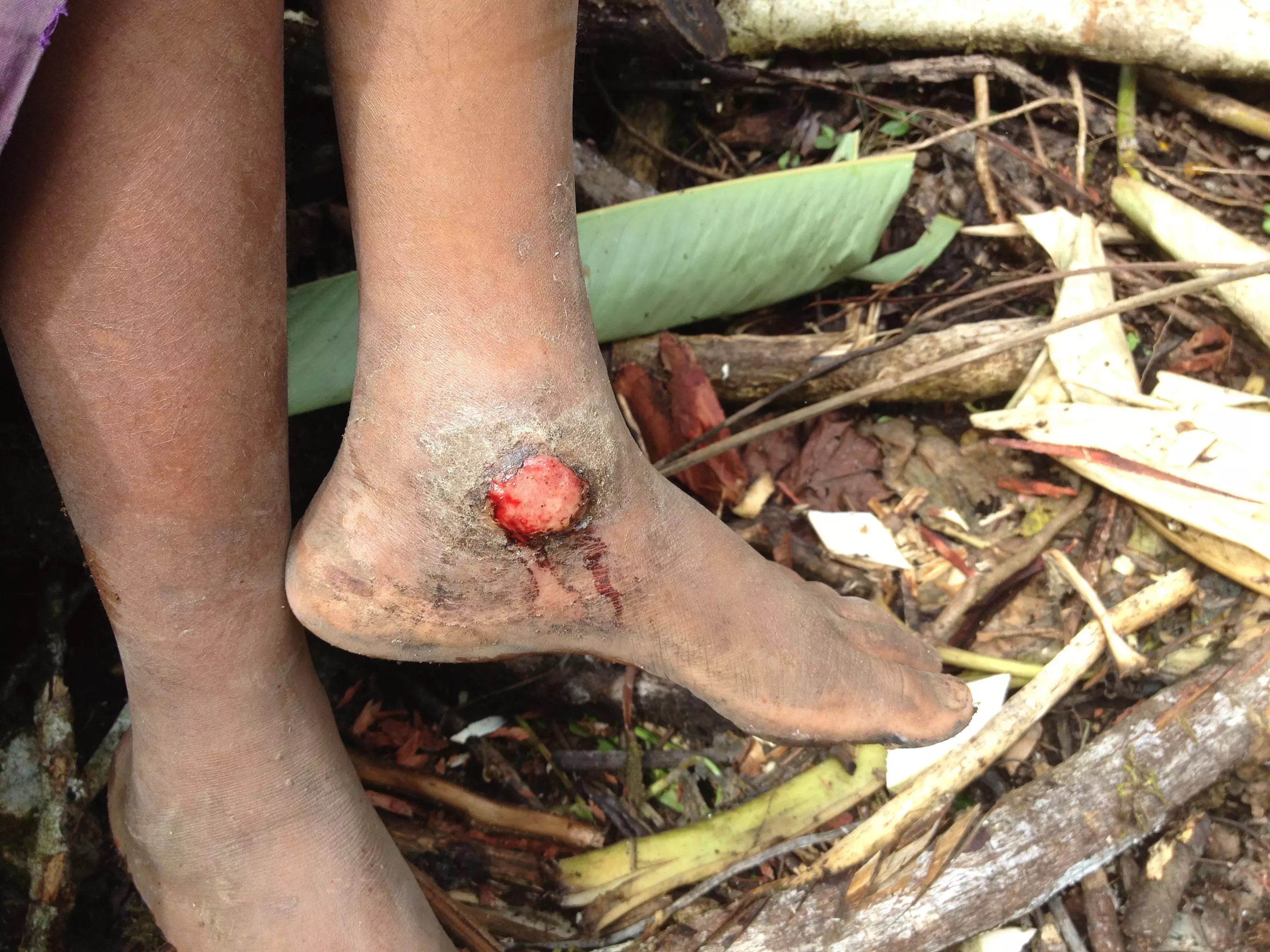Ulcer Plants: Unlocking the Medicine Cabinet in Papua New Guinea
Searching for a clinically effective plant medicine to treat debilitating infected skin ulcers in remote areas of Papua New Guinea

The aim of this project is to identify clinically effective antibacterial plant saps that can be used as topical antiseptics for early treatment of infected skin ulcers in remote areas of Papua New Guinea.
Remote villages in Papua New Guinea often lack access to basic medicines, and antibacterial plant saps could be a useful first-line treatment where no other option is available. Cutaneous ulcers, which typically present as circular weeping sores on the lower leg or ankle are very common in Papua New Guinea, especially in children who tend to walk around barefoot. In a rainforest environment a small scratch on the ankle can quickly become infected with a range of different bacteria to form a painful and debilitating non-healing ulcer. Simple antiseptic medicines could prevent this from happening if they were used straight away, but there is no easy way to deliver healthcare to people who live in remote mountainous rainforest villages. For this reason, cutaneous ulcers are normally left untreated.

In this specific therapeutic context, a plant medicine which is readily available in villages where affected people live, could be the best treatment option. Early treatment with a highly accessible, zero-cost plant medicine in a village is preferable to walking many miles barefoot through rainforest mud to reach an aid post or clinic.
A key question is therefore which plants saps are antibacterial and which if any are likely to promote wound healing in vivo. To gain an understanding of the different plant species used to treat skin ulcers in Papua New Guinea we have carried out ethnobotanical field work over many years, living with different remote communities and learning about their plant medicines. Over time, we have collected samples of plant saps that have a history of use as topical antiseptics and tested them in the laboratory with bacterial pathogens that are known to infect skin ulcers in Papua New Guinea. We have also examined their chemical composition and tested them with human cells that control wound inflammation and tissue remodelling to check their effects.
The sap from one species, Ficus septica looks particularly promising. In 2019 we gained approval to carry out a clinical trial comparing the efficacy of the F. septica sap against Savlon antiseptic cream or simple hygiene with soap and water. The results, published in the journal Phytomedicine are promising and suggest non-inferiority to the comparator treatments. Thanks to recent funding from the Old Dart Foundation, we are now preparing to carry out a repeat clinical trial with greater numbers of patients and we will use the latest wound imaging technology to get a more accurate measure of ulcer healing levels. We will also investigate the efficacy of two other antibacterial traditional plant medicines each of which are used traditionally for treating infected ulcers. Overall, we see this approach as the best solution to this problem. This is a unique health intervention that doesn’t depend on physical infrastructure, no clinics or pharmacies are needed; just the plant, and knowledge of how to use it.

- Clinical trial data to assess the efficacy of traditional plant medicines in treating infected cutaneous ulcers in Papua New Guinea.
- A Knowledge, Attitude and Practices (KAP) survey to reveal the attitudes of people in Papua New Guinea towards the use of plant medicines as treatments for cutaneous ulcers.
Project Leader
Team
Camila González-Beiras, Fight AIDS and Infectious Diseases Foundation
Stephen Walker, London School of Hygiene and Tropical Medicine
Oriol Mitjà, Fight AIDS and Infectious Diseases Foundation.
Ryan Moseley, Cardiff University.
Ronan Mccarthy, Brunel University.
Rachael Moses, University of Melbourne
The Old Dart Foundation
Deli, J., González-Beiras, C., Guldan, G. S., Moses, R. L., Dally, J., Moseley, R., Lundy, F. T., Corbacho-Monne, M., Walker, S. L., Cazorla, M. U., Ouchi, D., Fang, R., Briggs, M., Kiapranis, R., Yahimbu, M., Mitjà, O., & Prescott, T. A. K. (2022).
Ficus septica exudate, a traditional medicine used in Papua New Guinea for treating infected cutaneous ulcers: in vitro evaluation and clinical efficacy assessment by cluster randomised trial.
Phytomedicine : international journal of phytotherapy and phytopharmacology, 99, 154026.